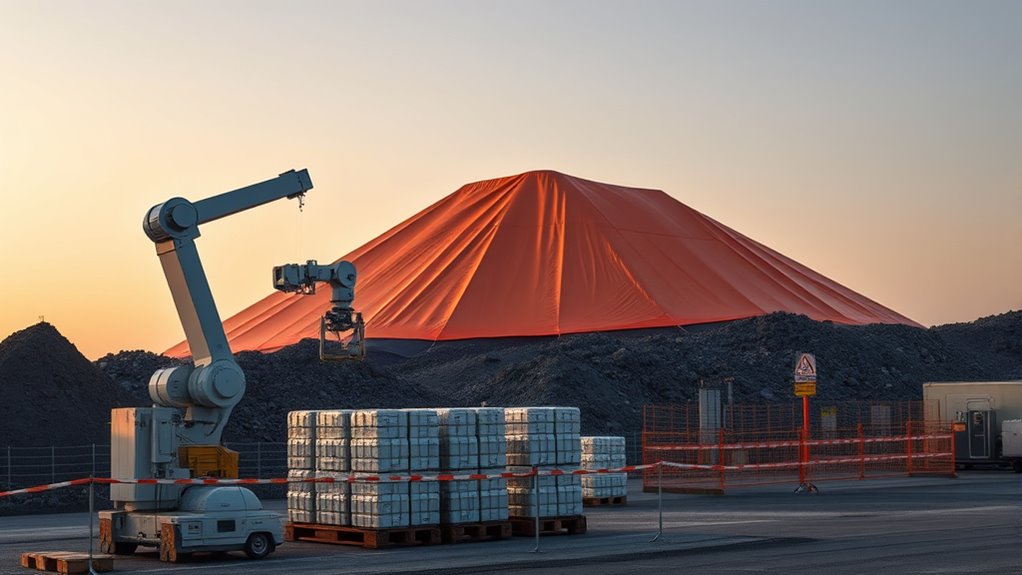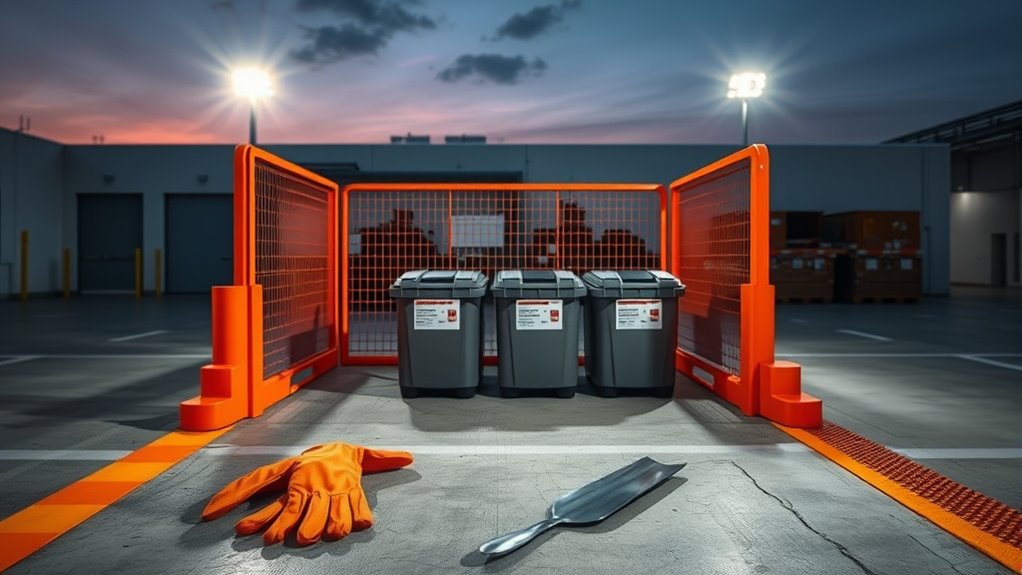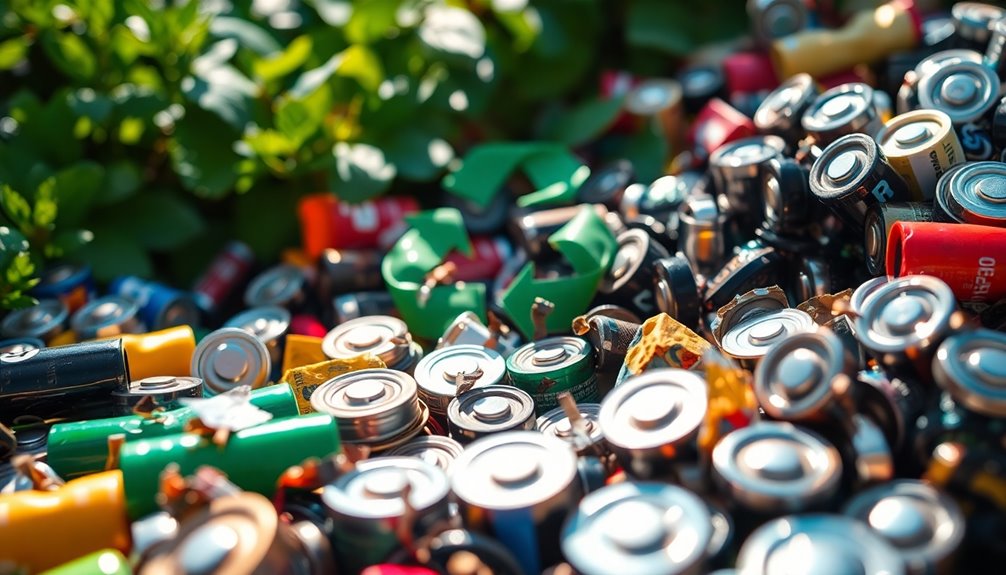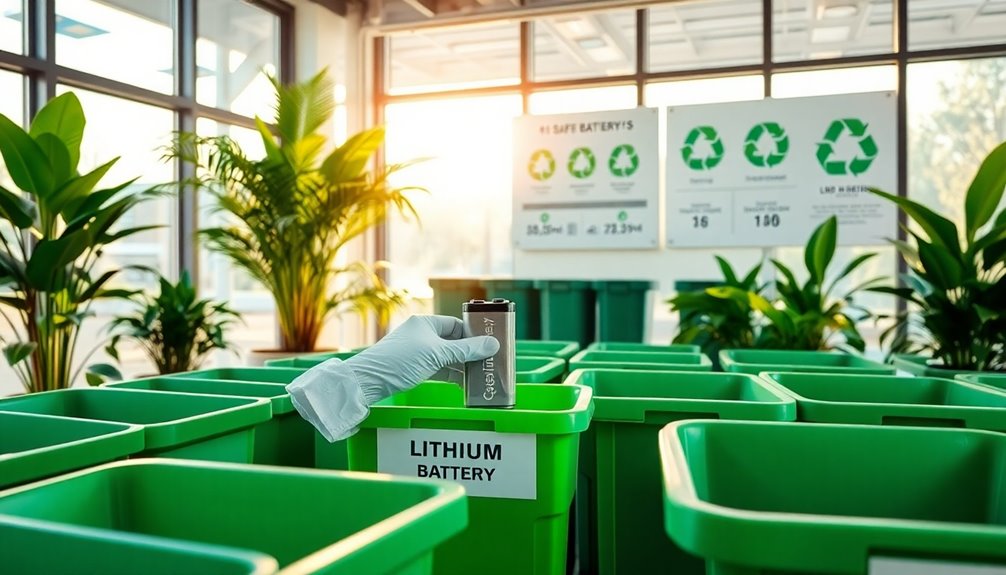To handle residual materials safely during final disposal, you must properly identify and classify waste, ensuring hazardous wastes are separated and contained in specially designed, leak-proof containers. Transport the waste with licensed carriers following strict safety procedures. Use certified disposal facilities that meet regulations, and keep detailed records of all activities. Following these best practices minimizes environmental and health risks. Continuing with this guidance will help you learn more about effective and responsible waste disposal methods.
Key Takeaways
- Properly identify and classify residual materials to determine suitable disposal methods.
- Use certified containers and facilities designed for safe handling of residual and hazardous waste.
- Follow legal regulations and standards for transportation, storage, and final disposal procedures.
- Maintain detailed records of waste generation, movement, and disposal for compliance and traceability.
- Ensure disposal is carried out by trained professionals to prevent environmental contamination and health risks.

Have you ever wondered what happens to waste once it’s no longer useful? The process of final disposal is essential in ensuring that residual materials, especially hazardous waste, do not pose a threat to people or the environment. When waste reaches the end of its useful life, it must be handled with care and in strict accordance with disposal regulations designed to minimize risks. Hazardous waste, in particular, demands special attention because of its potential to cause health problems, environmental contamination, or even disasters if improperly managed. That’s why understanding the proper procedures for final disposal is indispensable.
You’re responsible for ensuring that hazardous waste is disposed of properly. Disposal regulations set the standards for how such waste should be handled, stored, transported, and ultimately disposed of. These regulations are established by government agencies, such as the Environmental Protection Agency (EPA), and are designed to protect communities, ecosystems, and workers involved in waste management. They specify the types of facilities that can accept hazardous waste, the labeling and packaging requirements, and the documentation needed to track waste from cradle to grave. Following these regulations isn’t just a legal obligation; it’s an essential part of safeguarding public health and the environment.
When the time comes to dispose of residual materials, you must first ensure they are correctly identified and classified. This step helps determine whether the waste is hazardous and what disposal methods are appropriate. For hazardous waste, you’ll need to use specially designed containers to prevent leaks, spills, or accidental exposure. Transporting hazardous waste must be done by licensed carriers who follow strict safety protocols. Once the waste reaches a permitted disposal facility, it’s usually subjected to final treatment or containment—such as secure landfilling or chemical neutralization—to prevent any future release of dangerous substances. Proper handling and waste classification are critical to ensure safe disposal practices.
Proper documentation is another vital aspect of final disposal. You’ll want to maintain detailed records of waste generation, transportation, and disposal activities. This documentation ensures compliance with disposal regulations and provides traceability should any issues arise later. It also helps authorities verify that waste has been handled responsibly and in accordance with legal standards. Failing to adhere to disposal regulations can result in hefty fines, legal action, or environmental cleanup liabilities. That’s why it’s essential to work with certified disposal facilities and trained professionals who understand the complexities of hazardous waste management.
Frequently Asked Questions
How Are Residual Materials Classified for Final Disposal?
You classify residual materials for final disposal through residual classification and waste categorization. First, you assess the chemical and physical properties of the waste, considering toxicity, reactivity, and hazardousness. Then, you assign it to specific categories, such as hazardous, non-hazardous, or special waste, based on regulatory guidelines. This process guarantees proper handling, minimizes risks, and complies with disposal regulations, safeguarding both people and the environment.
What Are the Environmental Risks of Improper Disposal?
Imagine improper disposal of hazardous chemicals, like in a hypothetical case where chemicals seep into the groundwater. You risk contaminating drinking water sources, harming ecosystems, and causing health issues for nearby communities. These hazards highlight the importance of proper disposal methods. If you neglect this, groundwater contamination can occur, leading to long-term environmental damage and costly cleanup efforts. Always handle residual materials responsibly to protect both the environment and public health.
How Do Disposal Methods Vary by Material Type?
You should choose disposal methods based on material type, as recycling options vary for plastics, metals, and paper, ensuring resources are reused sustainably. For hazardous waste, specialized disposal is essential to prevent environmental harm. Properly sorting materials allows you to follow regulations and minimize risks, such as contamination or pollution. Always consult local guidelines to determine the safest, most effective disposal method, especially for hazardous or non-recyclable residuals.
What Regulations Govern Residual Waste Disposal?
You need to follow regulations governing residual waste disposal, especially for hazardous waste, which is strictly controlled by laws like RCRA and CERCLA. These regulations guarantee safe handling, storage, and disposal. Recycling procedures are also mandated for certain materials to reduce waste. By complying with these rules, you prevent environmental contamination and protect public health, making sure residual waste is managed responsibly and safely.
How Can Communities Prepare for Waste Disposal Processes?
Oh, sure, because who doesn’t love last-minute surprises with waste disposal? To prepare, you should prioritize community engagement and participate in disposal facility planning. Attend local meetings, voice your concerns, and stay informed about waste management strategies. By actively involving yourself, you help guarantee proper disposal procedures are in place, making the process smoother and safer for everyone. After all, nobody wants to be the next “trash” talk!
Conclusion
Now that you know how to handle residual materials safely, remember that proper disposal is key to protecting our environment and health. Don’t cut corners or take shortcuts—it’s better to be safe than sorry. When it comes to final disposal, playing it by the book ensures no stone is left unturned. Stay vigilant, follow the guidelines, and you’ll keep the planet in good shape for future generations. After all, safety always pays off in the long run.










